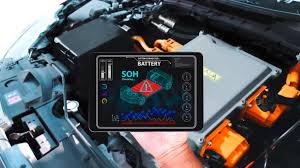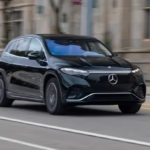What Are the Disadvantages of an Electric Car? Key Cons Every Buyer Should Know

Electric cars are revolutionizing the auto industry—with zero emissions, instant torque, and sleek tech. But if you’re asking, “What are the disadvantages of an electric car?”—you’re asking the right question. While EVs (electric vehicles) come with many perks, they aren’t perfect for everyone.

Before committing to your first EV, it’s important to understand the limitations—so you don’t end up with range anxiety, budget regrets, or unexpected hassles. This guide explores the five biggest downsides of owning an electric car, helping you make a confident, informed choice.
1. Limited Range and Long-Distance Travel Challenges
Compared to gas-powered vehicles, most EVs still offer less range per full charge. While top-tier models can exceed 350 miles, many affordable electric cars max out at 200–250 miles.

EV Range Comparison:
| Vehicle Type | Approx. Range (miles) |
|---|---|
| Affordable EVs | 150–220 |
| Mid-Tier EVs | 230–300 |
| Premium EVs (e.g. Tesla) | 320–400+ |
Factors that reduce EV range:
- Cold weather (affects battery performance)
- Highway speeds
- Use of AC or heating
- Driving uphill or carrying heavy loads
This limitation can make long road trips more stressful, especially if you’re not near a major highway with fast chargers.
2. Charging Takes Longer Than Fueling Up
What are the disadvantages of an electric car? Unlike gas vehicles, which fill up in under 5 minutes, electric cars require time to recharge—anywhere from 30 minutes to 12 hours depending on the charger.

Types of Charging:
- Level 1 (120V home outlet): 3–5 miles of range per hour
- Level 2 (240V home/public): 15–30 miles of range per hour
- DC Fast Charging: 150–200+ miles in 30 minutes (if supported by your car)
Fastest Charging EVs in 2025:
- Hyundai Ioniq 6: ~18 min (10–80%)
- Kia EV6: ~20 min (800V system)
- Tesla Model Y (Supercharger): ~25 min
Drawback: Not all areas have public fast chargers. Rural and suburban regions still lack sufficient EV infrastructure, which could be a deal-breaker for some.
3. High Upfront Cost (Even With Incentives)
EVs are getting cheaper, but they still cost more than similar gas-powered models. The high cost is mostly due to the expensive battery pack.
Average Starting Prices:
| Vehicle Type | Gas Car | EV Equivalent |
|---|---|---|
| Compact Sedan | $25,000 | $31,000–$36,000 |
| Crossover SUV | $29,000 | $40,000–$45,000 |
Yes, there are federal tax credits (up to $7,500), but they apply only to certain models and leases. Plus, not all buyers qualify based on income or vehicle eligibility.
4. Battery Degradation and Replacement Cost
EV batteries don’t last forever. Over time, they lose capacity—meaning less range, slower charging, and potential replacement after 8–12 years.

EV Battery Warranties:
- Most automakers offer 8 years / 100,000 miles
- Tesla, Hyundai, and Nissan offer similar terms
Battery replacement cost (post-warranty):
Ranges between $7,000–$20,000 depending on the model.
While modern batteries are highly reliable, this is still a long-term cost consideration, especially for used EV buyers.
5. Limited Affordable Options and Model Variety
Though the EV market is expanding, most electric cars are still mid- to high-end. Affordable electric cars under $30,000 are rare and may lack features or space.

Top Affordable EVs (2025):
- Chevy Bolt EUV – Compact but discontinued soon
- Nissan Leaf – Basic, but reliable
- Hyundai Kona Electric – Stylish with solid range
Missing in Action: Affordable EV minivans, pickup trucks, and all-wheel drive hatchbacks are still underrepresented in the market.
Conclusion: Are EV Disadvantages Deal-Breakers?
Now that you know what the disadvantages of an electric car are, let’s recap:
- Shorter range than gas cars
- Charging takes longer and stations are limited
- Higher upfront costs
- Battery degradation is a long-term concern
- Fewer budget-friendly models available
Bottom Line:
If you mostly drive short distances, can charge at home, and value eco-friendliness and low maintenance, an EV can still be a great choice. But if you rely on long-distance driving, live in a rural area, or are shopping on a strict budget, it’s important to weigh the trade-offs carefully.






















































































































































































































































































































